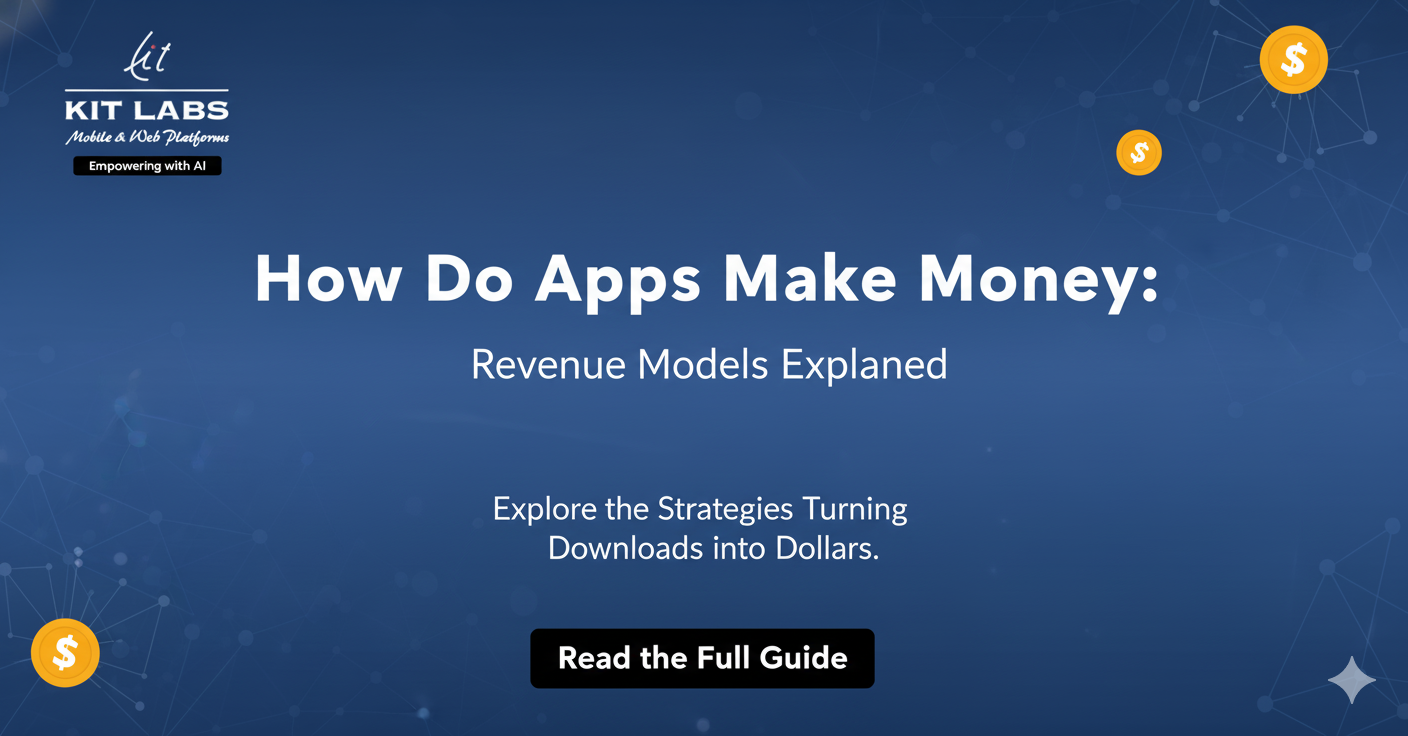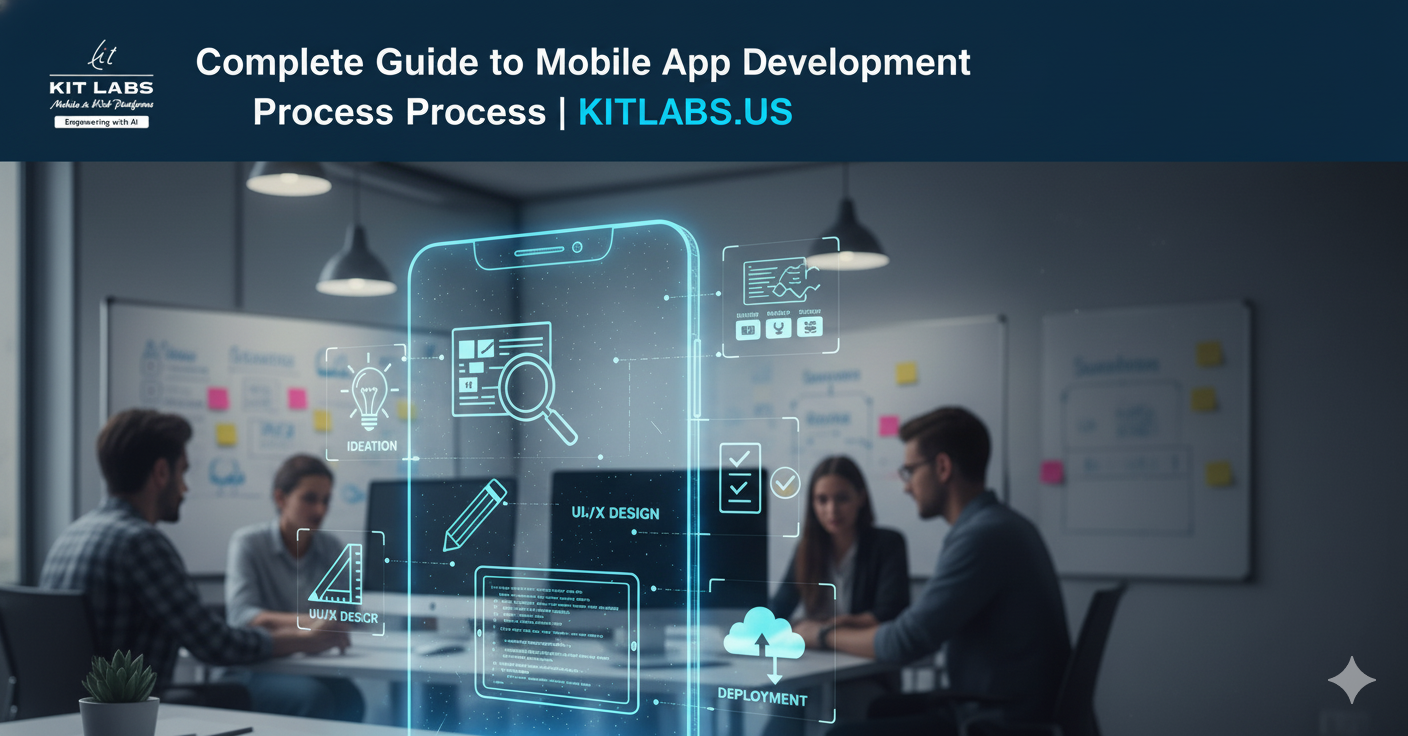
How Do Apps Make Money: Revenue Models Explained
In today’s digital ecosystem, mobile applications are not only tools for convenience and entertainment—they have become powerful business assets capable of generating substantial revenue. With millions of apps available across iOS and Android platforms, understanding how to make money with apps is critical for developers, startups, and established businesses alike.
This guide dives deep into app revenue models, mobile app monetization strategies, and practical ways to optimize app revenue generation. By the end, you will have a clear understanding of mobile app business models and actionable insights to maximize your app’s profitability.
1. Understanding Mobile App Monetization
Mobile app monetization refers to the strategies and methods used to generate income from mobile applications. While some apps are designed purely for user engagement or branding, most successful apps incorporate app monetization methods to sustain development, scale features, and turn usage into revenue.
Monetization depends on factors such as the app category, target audience, functionality, and market demand. A solid mobile app business model aligns user experience with revenue generation, ensuring that users remain engaged while the app earns money efficiently.
2. Popular App Revenue Models
There are several app revenue models, each suitable for different types of apps and audiences. Choosing the right model—or combining multiple models—can significantly impact mobile app revenue.
2.1 Paid Apps
A straightforward model where users pay upfront to download the app.
-
Pros: Immediate revenue from downloads, simple implementation.
-
Cons: High barrier for users, may reduce adoption.
-
Best for: Premium apps with unique functionality or niche offerings.
2.2 Freemium Model
The app is free to download but offers premium features or content for a fee.
-
Pros: Attracts a larger user base, provides recurring revenue.
-
Cons: Requires compelling premium features to convert free users.
-
Best for: Productivity apps, gaming apps, and subscription-based services.
2.3 In-App Advertising
Revenue is generated by displaying ads within the app. Common formats include banners, interstitials, native ads, and video ads.
-
Pros: Free app download attracts more users; scalable revenue through impressions and clicks.
-
Cons: Poorly integrated ads can disrupt UX and reduce retention.
-
Best for: Social media apps, entertainment apps, news apps.
2.4 In-App Purchases (IAP)
Users buy digital goods or services within the app, such as virtual currency, premium content, or unlockable features.
-
Pros: Direct revenue from engaged users; encourages repeat purchases.
-
Cons: Requires a robust economy and value proposition.
-
Best for: Gaming apps, subscription-based content platforms.
2.5 Subscription Model
Users pay recurring fees (weekly, monthly, yearly) for access to premium content, features, or services.
-
Pros: Predictable recurring revenue, high customer lifetime value.
-
Cons: Needs continuous updates and value to retain subscribers.
-
Best for: Streaming services, fitness apps, SaaS apps.
2.6 Sponsorships and Partnerships
Revenue is earned through brand partnerships, sponsored content, or strategic alliances.
-
Pros: Can bring significant revenue without charging users.
-
Cons: Limited to apps with substantial user engagement or niche audiences.
-
Best for: Influencer apps, content platforms, lifestyle apps.
2.7 Data Monetization
Apps can generate revenue by collecting anonymized user data and insights for market research or analytics purposes.
-
Pros: Passive revenue stream without charging users.
-
Cons: Privacy concerns and regulatory compliance challenges.
-
Best for: Analytics-heavy apps, research-focused applications.
3. Factors Influencing Mobile App Revenue
Several variables determine how much revenue an app can generate:
-
User Base Size: Larger audiences often translate to higher revenue, particularly for ad-based or freemium models.
-
Engagement Levels: Active and engaged users are more likely to make in-app purchases or subscribe.
-
App Category: Games, entertainment, finance, and productivity apps generally generate more revenue.
-
Geographic Market: Monetization potential varies across regions due to purchasing power and user behavior.
-
Retention Rates: Long-term users increase the lifetime value and monetization opportunities.
Understanding these factors allows app developers to design monetization strategies that maximize app income sources without compromising user experience.
4. Combining Revenue Models
Many successful apps use multiple monetization strategies to diversify income. Examples include:
-
Freemium + In-App Purchases: Free app with premium content or virtual goods.
-
In-App Ads + Subscriptions: Ad-supported free version with an option to remove ads via subscription.
-
Sponsorship + Data Monetization: Partnered campaigns combined with analytics-driven insights.
A multi-pronged approach balances app revenue generation while catering to different user segments.
5. Mobile App Monetization Best Practices
To maximize mobile app revenue, developers should:
-
Understand the Target Audience: Tailor monetization strategies to user preferences and behavior.
-
Prioritize UX: Avoid intrusive ads or overly aggressive paywalls.
-
A/B Test Strategies: Test pricing, subscription tiers, and ad placement for optimal results.
-
Monitor Metrics: Track conversion rates, revenue per user, and retention to refine strategies.
-
Update Regularly: Introduce new features, content, and monetization options to retain and engage users.
These practices ensure a sustainable revenue stream while maintaining a positive user experience.
6. Emerging Trends in App Monetization
The mobile ecosystem evolves rapidly. Staying informed about trends helps optimize app monetization strategies:
-
Hybrid Monetization Models: Combining subscriptions, ads, and IAP to diversify revenue.
-
Personalized Ads: Using AI to deliver targeted ads that increase engagement and revenue.
-
Microtransactions: Small-value purchases that cumulatively generate significant income.
-
Blockchain and NFTs: Apps leveraging digital assets for unique monetization opportunities.
-
Gamification: Reward systems to encourage purchases and engagement.
Apps that adopt innovative monetization strategies can outperform competitors in revenue generation and user engagement.
7. Examples of Successful Mobile App Revenue Models
-
Spotify: Freemium model with subscription-based premium access.
-
Candy Crush Saga: Free-to-play with in-app purchases for boosters and lives.
-
Instagram: Free app monetized through sponsored content and advertising.
-
Calm: Subscription-based meditation app with premium content tiers.
These apps illustrate how understanding user behavior and aligning monetization strategies with engagement can lead to app income sources that sustain growth and profitability.
8. How to Make Money with Apps: Step-by-Step
-
Define your mobile app business model: Choose the revenue model(s) that fit your target audience and app type.
-
Build user engagement: Develop an intuitive, high-performing app to attract and retain users.
-
Implement monetization features: Add ads, subscription options, or in-app purchase capabilities.
-
Optimize pricing strategies: Test subscription tiers, IAP pricing, or ad frequency.
-
Analyze data: Track revenue metrics and user behavior to refine monetization.
-
Iterate continuously: Update features, introduce new monetization streams, and enhance UX.
Following this structured approach ensures consistent and scalable app revenue generation.
9. Challenges in Mobile App Monetization
Developers may face challenges when implementing monetization strategies:
-
User Resistance: Some users reject paywalls or intrusive ads.
-
Market Saturation: Competition makes it harder to acquire paying users.
-
Regulatory Compliance: Privacy laws and app store policies limit certain monetization methods.
-
Retention Issues: Without engaged users, revenue potential is limited.
Addressing these challenges requires a balance between monetization and user experience, supported by data-driven insights.
10. Future of Mobile App Revenue Models
The future of mobile app monetization points toward personalization, hybrid revenue models, and AI-driven optimization. Apps that adapt to changing user behavior, incorporate innovative monetization techniques, and maintain a strong value proposition will dominate app revenue generation in the coming years.
Emerging technologies, such as augmented reality, virtual reality, and blockchain, offer new app monetization methods and app income sources, creating exciting opportunities for developers and businesses.
11. Conclusion
Understanding how to make money with apps is essential for anyone looking to succeed in the mobile ecosystem. By exploring various app revenue models, evaluating mobile app business models, and implementing strategic app monetization methods, developers can unlock multiple app income sources and sustainable mobile app revenue.
Successful monetization balances user experience, engagement, and profitability. Businesses that adopt innovative strategies, analyze data, and continuously optimize their apps can ensure consistent growth and long-term success.
At KITLABS, we guide businesses in building mobile applications that are not only functional and engaging but also equipped with effective mobile app monetization strategies to maximize revenue potential.




